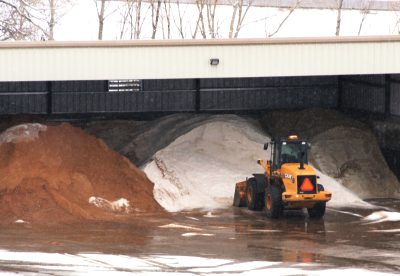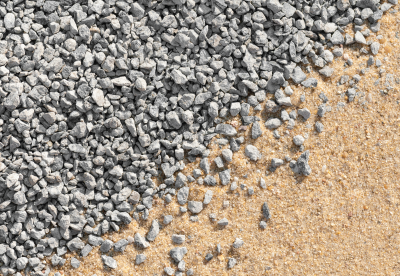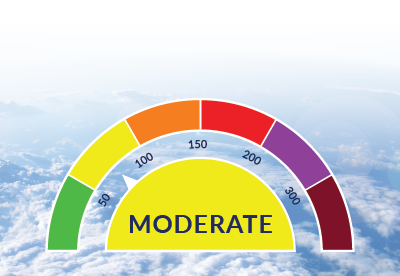Date September 6, 2020 | Brooke Loeffler
PM 2.5 vs PM 10: Understanding Particle Air Pollution
What is Particulate Matter?
Air pollution can be sorted according to the 3 stages of matter: gas, liquid, and solid. Measuring and reducing each type of pollution requires a different approach. Particulate matter (PM) is microscopic solid or liquid particles in the air. That means, PM pollution does not include gas pollutants like carbon dioxide (CO2) and nitrogen dioxide (NO2). PM particles are so small they are measured in micrometers (µ).
What Causes Particulate Air Pollution?
Particulate matter enters the air from many different sources, some are anthropogenic (natural), and others from man-made sources. Natural sources of particulate matter included dust, sand, and pollen blown from the wind. Wildfires (natural and human caused) also release particulate matter into the air. Other man-made sources include coal or wood burning furnaces (in homes or factories), vehicles with internal combustion engines, over use of dusty aggregates on the roads, and more.
PM 2.5 VS PM
Environmental scientists categorize particulate matter into 2 groups: PM 2.5 and PM 10. PM 2.5 includes particulate matter that measures 2.5 micrometers and below. PM 10 includes particulate matter that measures 10 micrometers and below (that means PM 10 includes PM 2.5).
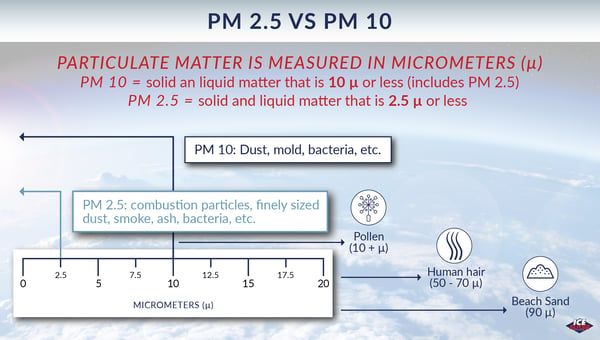
All particulate matter adversely impacts the climate and our health in different ways. However, scientists have found that PM 2.5 is the category of biggest concern. According to the Health Effects Institute, PM 2.5 is the 6th highest risk factor for early death in the world and causes chronic respiratory disease, heart disease, and cancer. These particles are small enough that when they are directly inhaled, can enter into our bloodstream, and cause harmful inflammation in our respiratory and circulatory systems.
What Can We All Do To Help?
There are a few steps all of us can take to help reduce particulate matter during the winter time:
- Stay Informed (keep up to date on pollution concerns in your city and state, follow local environmental guidelines that encourage changes during the winter)
- Drive Responsibly (carpool when possible, and plan your excursions/errands wisely to reduce your drive time)
- Convert to cleaner fuels (look into switching from burning coal or wood to clean burning fuels such as natural gas and propane)
- Use deicers responsibly (use a granular deicer that does not require additional dusty aggregates that release PM into the air)
Ice Slicer’s Commitment to Environmental Responsibility
Ice Slicer is proud to offer environmentally responsible deicing solutions for areas that struggle with both PM 10 and PM 2.5 pollution. In fact, switching from dusty road aggregates to Ice Slicer helped Utah meet a clean air milestone!
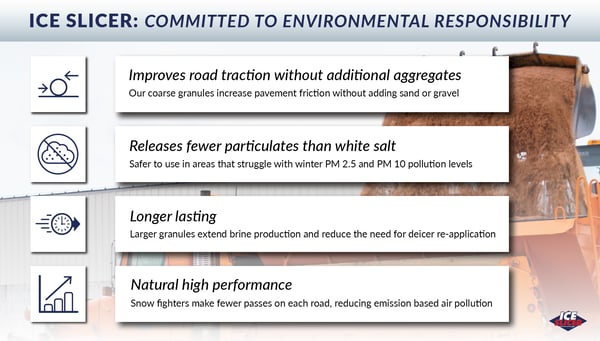
Our environmentally friendly deicer contains fewer particulates than white road salt, and eliminates the need to apply additional aggregates to the road. Our ideal blend of granule sizes provide stabilizing traction on paved surfaces without adding sand and gravel that disperse particulate matter into the air.
Independent lab and field tests show that Ice Slicer also significantly out performs white salt at all temperatures. Our naturally high performance means snow fighters take fewer passes at each road, reducing emission caused winter pollution. In addition, when new snowfall hits, Ice Slicer treated roads stay clearer and safer for longer than other deicing products, reducing the need for more deicer applications.
© 2023 Redmond Minerals Inc.
